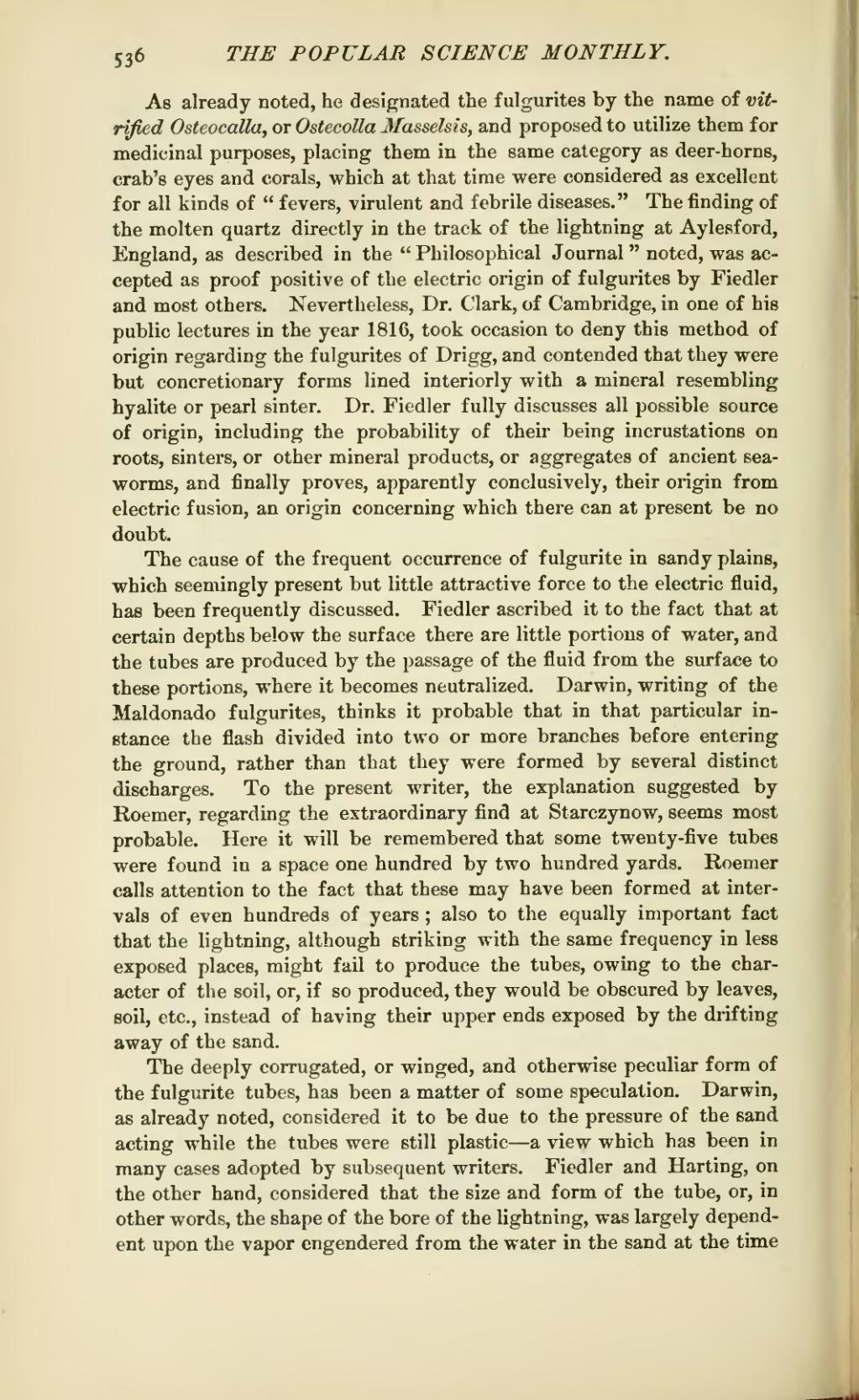As already noted, he designated the fulgurites by the name of vitrified Osteocalla, or Ostecolla Masselsis, and proposed to utilize them for medicinal purposes, placing them in the same category as deer-horns, crab's eyes and corals, which at that time were considered as excellent for all kinds of "fevers, virulent and febrile diseases." The finding of the molten quartz directly in the track of the lightning at Aylesford, England, as described in the "Philosophical Journal" noted, was accepted as proof positive of the electric origin of fulgurites by Fiedler and most others. Nevertheless, Dr. Clark, of Cambridge, in one of his public lectures in the year 1816, took occasion to deny this method of origin regarding the fulgurites of Drigg, and contended that they were but concretionary forms lined interiorly with a mineral resembling hyalite or pearl sinter. Dr. Fiedler fully discusses all possible source of origin, including the probability of their being incrustations on roots, sinters, or other mineral products, or aggregates of ancient seaworms, and finally proves, apparently conclusively, their origin from electric fusion, an origin concerning which there can at present be no doubt.
The cause of the frequent occurrence of fulgurite in sandy plains, which seemingly present but little attractive force to the electric fluid, has been frequently discussed. Fiedler ascribed it to the fact that at certain depths below the surface there are little portions of water, and the tubes are produced by the passage of the fluid from the surface to these portions, where it becomes neutralized, Darwin, writing of the Maldonado fulgurites, thinks it probable that in that particular instance the flash divided into two or more branches before entering the ground, rather than that they were formed by several distinct discharges. To the present writer, the explanation suggested by Roemer, regarding the extraordinary find at Starczynow, seems most probable. Here it will be remembered that some twenty-five tubes were found in a space one hundred by two hundred yards. Roemer calls attention to the fact that these may have been formed at intervals of even hundreds of years; also to the equally important fact that the lightning, although striking with the same frequency in less exposed places, might fail to produce the tubes, owing to the character of the soil, or, if so produced, they would be obscured by leaves, soil, etc., instead of having their upper ends exposed by the drifting away of the sand.
The deeply corrugated, or winged, and otherwise peculiar form of the fulgurite tubes, has been a matter of some speculation. Darwin, as already noted, considered it to be due to the pressure of the sand acting while the tubes were still plastic—a view which has been in many cases adopted by subsequent writers. Fiedler and Harting, on the other hand, considered that the size and form of the tube, or, in other words, the shape of the bore of the lightning, was largely dependent upon the vapor engendered from the water in the sand at the time
